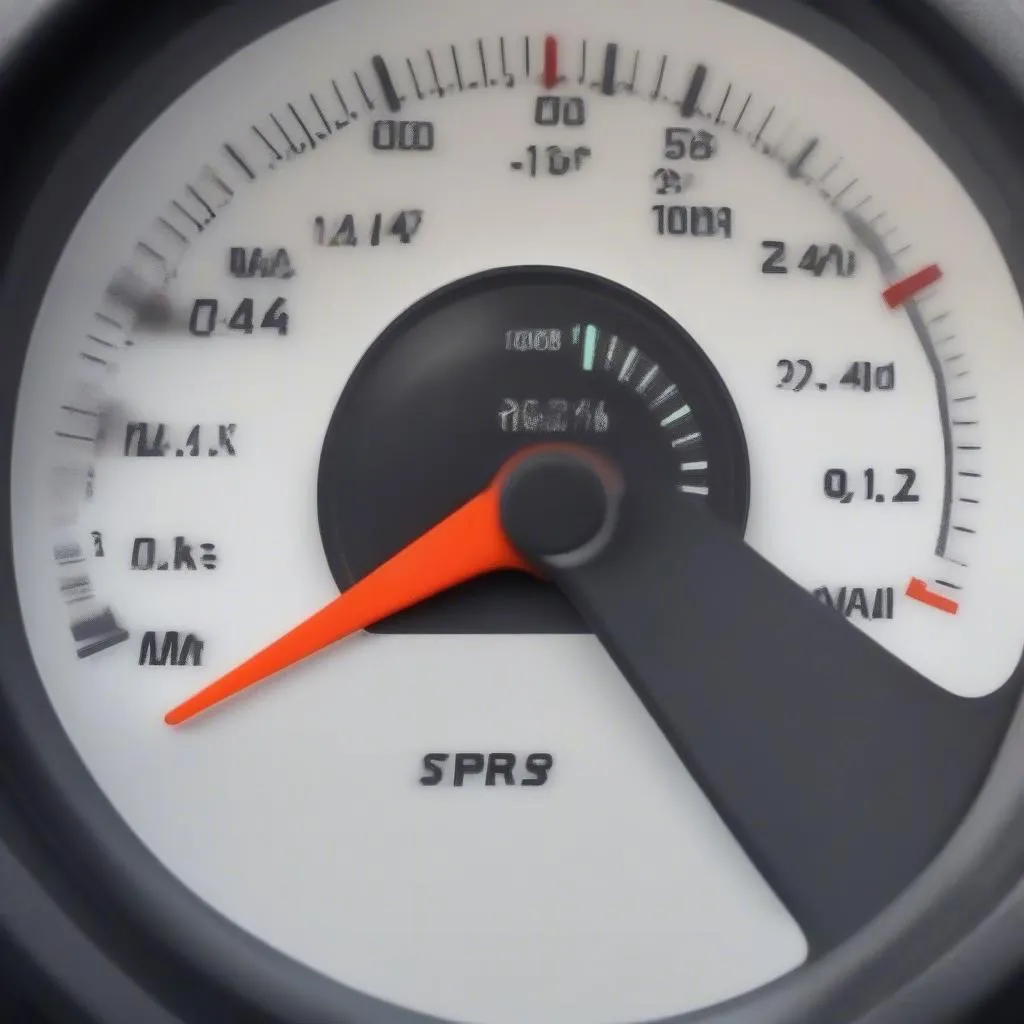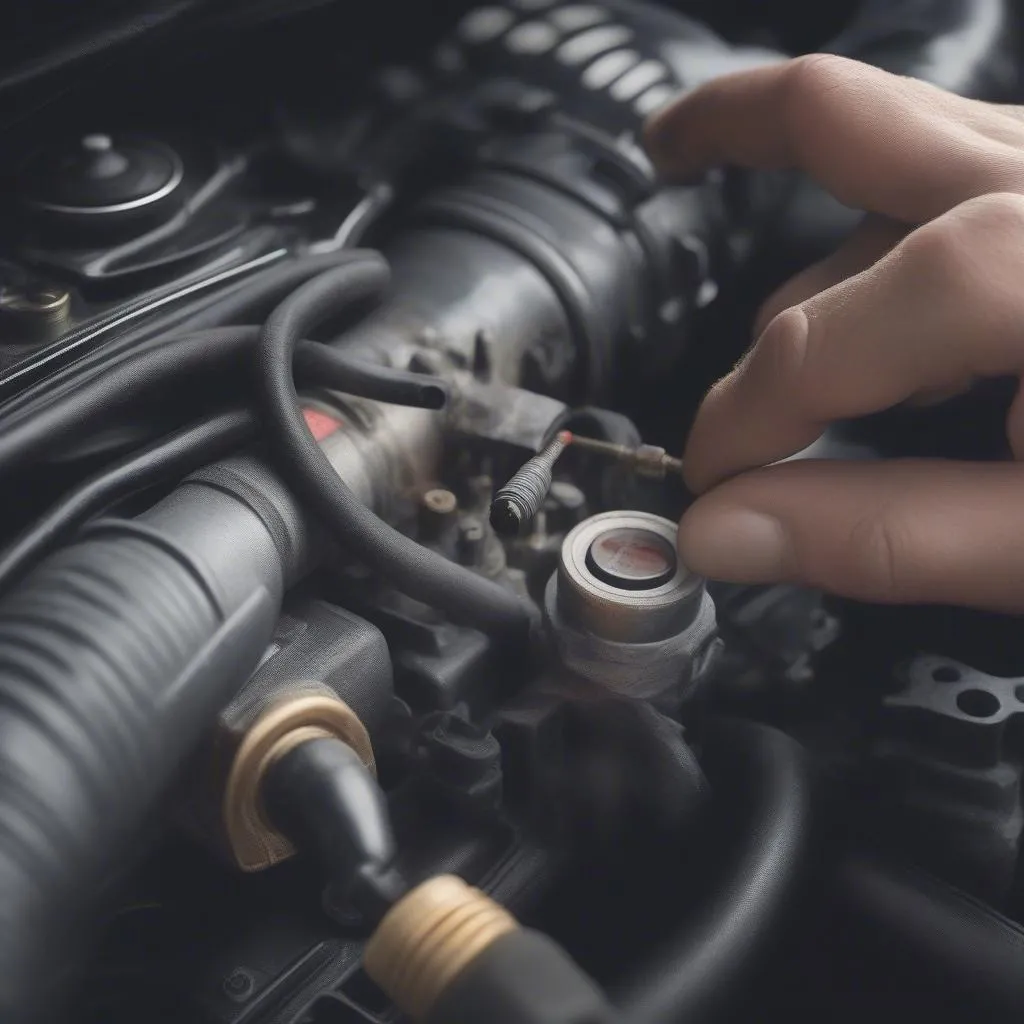Is your 1983 Mercedes 300SD experiencing a transmission flare? This common issue, where the engine revs up during shifting but the vehicle doesn’t accelerate as expected, can be frustrating and even dangerous. Fortunately, by understanding the causes and symptoms, you can often fix the problem yourself and get your classic Mercedes running smoothly again.
Understanding Transmission Flare
Transmission flaring is a symptom, not a root cause, and it indicates a problem with the hydraulic system that controls gear changes in your Mercedes’ automatic transmission. Instead of a smooth shift, the transmission hesitates, causing the engine to rev higher than usual before engaging the next gear.
Identifying a Flaring Transmission
Recognizing the signs of transmission flare is crucial for early diagnosis:
- Engine Revving During Shifting: The most noticeable symptom is the engine revving up excessively between gear changes.
- Delayed Gear Engagement: You might experience a noticeable delay between shifting gears and the actual engagement, resulting in sluggish acceleration.
- Slipping Sensation: In some cases, the transmission may feel like it’s slipping in and out of gear, leading to a jerking or bumpy ride.
 Mercedes Transmission Flaring
Mercedes Transmission Flaring
Gathering the Necessary Tools
Before diving into repairs, it’s essential to gather the tools you’ll need:
- Transmission Fluid Dipstick: Used to check the fluid level and condition.
- Socket Set and Wrenches: For removing and tightening bolts related to the transmission pan and valve body.
- Drain Pan: To collect old transmission fluid.
- New Transmission Fluid and Filter: Mercedes transmissions require specific fluid types, so consult your owner’s manual for the correct specification.
- Torque Wrench: Essential for tightening bolts to the proper specifications, preventing leaks and damage.
 Car Repair Tools for Transmission Work
Car Repair Tools for Transmission Work
Troubleshooting and Repair
1. Check Transmission Fluid Level and Condition
- Fluid Level: With the engine warm and running, check the transmission fluid level using the dipstick. Low fluid levels can cause a variety of shifting problems, including flaring.
- Fluid Condition: Examine the fluid color. It should be bright red and translucent. Dark or burnt-smelling fluid indicates severe degradation and often necessitates a full transmission flush.
2. Inspect Vacuum Modulator
The vacuum modulator, responsible for modulating shift pressure based on engine load, can cause flaring if faulty.
- Locate the Modulator: It’s typically found on the passenger side of the transmission, connected to a vacuum hose.
- Check for Leaks: Inspect the vacuum hose and connections for any cracks or leaks. A leaking or disconnected vacuum line can disrupt pressure signals, leading to flaring.
- Test the Modulator: With the engine running, carefully disconnect the vacuum hose from the modulator. If you hear a hissing sound or notice a change in engine RPM, the modulator might be faulty and require replacement.
 Car Vacuum Modulator
Car Vacuum Modulator
3. Address Potential Valve Body Issues
The valve body, the transmission’s control center, houses various valves and solenoids that regulate fluid flow and gear engagement.
- Solenoid Problems: Worn or malfunctioning solenoids can disrupt fluid pressure, leading to flaring. Diagnostic tools like those from Cardiagtech can pinpoint faulty solenoids.
- Valve Body Contamination: Over time, debris and wear particles can accumulate in the valve body, affecting valve operation. Cleaning or rebuilding the valve body might be necessary.
4. Consult a Specialist
For complex issues or if you’re uncomfortable working on your transmission, consult a qualified mechanic specializing in Mercedes-Benz vehicles. They have the expertise and specialized tools, including advanced diagnostic software like those offered by CARDIAGTECH, to diagnose and repair intricate transmission problems effectively.
Frequently Asked Questions
Q: Can I drive my car with a flaring transmission?
A: While driving short distances with a flaring transmission might seem possible, it’s strongly discouraged. Continued driving under these conditions can exacerbate wear and lead to more significant, costly damage to your transmission.
Q: How often should I service my Mercedes transmission?
A: Mercedes recommends a transmission service, including a fluid and filter change, every 30,000 to 60,000 miles, depending on driving conditions and the model year. Regular maintenance is crucial for prolonging the life of your transmission.
Q: What is a transmission rebuild, and when might I need one?
A: A transmission rebuild involves disassembling, inspecting, cleaning, and replacing worn components within your transmission. This extensive procedure is typically necessary for transmissions exhibiting severe damage, often due to prolonged neglect or high mileage.
Conclusion
Addressing transmission flare in your 1983 Mercedes 300SD is vital for preserving the longevity and performance of your vehicle. While simple checks like fluid level and vacuum lines can often resolve the issue, more complex problems might necessitate professional attention. Remember, a well-maintained transmission translates to a smoother, more enjoyable driving experience.

